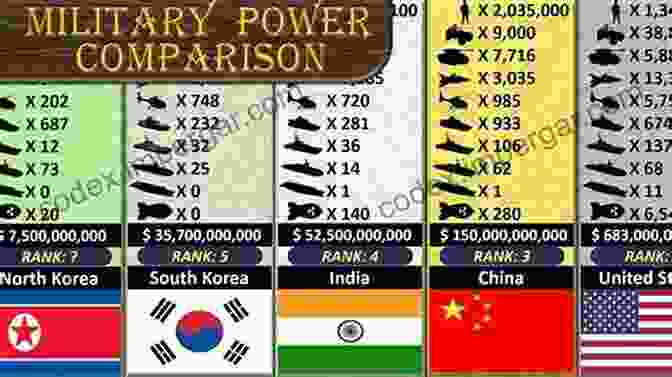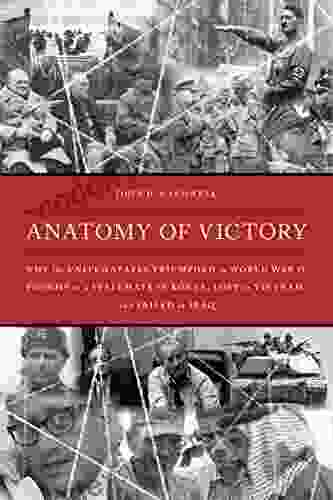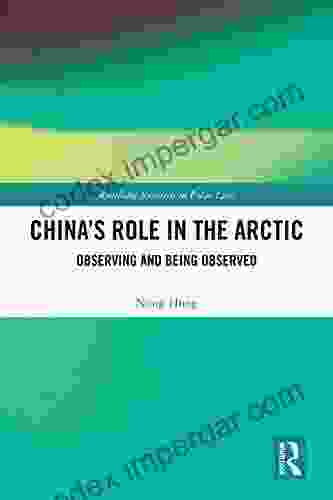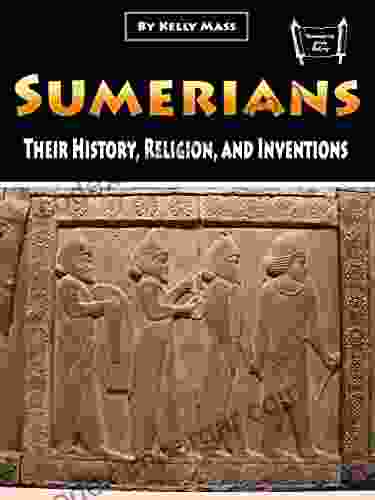Why the United States Triumphed in World War II but Fought to a Stalemate in Korea

The United States emerged from World War II as a global superpower, but just a few years later, it found itself locked in a bloody and protracted conflict in Korea. How could a nation that had triumphed so decisively in one war struggle to achieve its objectives in another? This article examines the factors that led to the US victory in World War II and its stalemate in the Korean War, providing a nuanced understanding of the complex interplay of military, political, and diplomatic factors that shaped these two conflicts. 4.6 out of 5 The United States possessed an unparalleled industrial capacity that allowed it to outproduce its enemies in weaponry, vehicles, and other war materiel. This industrial advantage was crucial in sustaining the Allies' war effort and eventually overwhelming the Axis powers. The US invested heavily in research and development, leading to the production of advanced weapons and technologies that gave it an edge over its adversaries. The atomic bomb, developed by the Manhattan Project, was the ultimate symbol of American technological prowess and played a decisive role in ending the war. The United States did not fight World War II alone. It formed alliances with Great Britain, the Soviet Union, and other countries, which shared the common goal of defeating the Axis powers. This cooperation allowed the Allies to pool their resources, coordinate their strategies, and maximize their effectiveness. President Franklin D. Roosevelt and his top military commanders exhibited exceptional leadership throughout the war. They developed a clear vision for victory, mobilized the nation's resources, and made bold decisions that shaped the course of the conflict. Unlike in World War II, the US did not enter the Korean War with a clear objective of achieving a decisive victory. The Truman administration sought to contain communism and prevent the spread of North Korean influence, but it was not prepared to commit the necessary resources to defeat North Korea outright. The Korean War was fought against the backdrop of the Cold War, a global ideological conflict between the United States and the Soviet Union. The US feared that a direct confrontation with North Korea could escalate into a wider conflict with China or the Soviet Union, and this limited its willingness to take risks. The entry of China into the war in 1950 proved to be a significant game-changer. China sent hundreds of thousands of troops to North Korea, bolstering its military strength and forcing the US and its allies to adopt a defensive posture. International pressure also played a role in the US stalemate in Korea. Allies such as Great Britain and France urged the US to seek a diplomatic solution to the conflict, fearing that a wider war could have catastrophic consequences. The US victory in World War II and its stalemate in the Korean War provide valuable lessons about the complexities of war and the challenges of achieving military objectives in different historical contexts. While the US possessed overwhelming industrial and technological superiority in World War II, it faced a different set of challenges in Korea, where limited war objectives, the Cold War context, Chinese intervention, and diplomatic pressures all contributed to the stalemate. Understanding these factors is crucial for policymakers and military leaders seeking to navigate the complexities of modern warfare. Language : English File size : 49022 KB Text-to-Speech : Enabled Screen Reader : Supported Enhanced typesetting : Enabled Word Wise : Enabled Print length : 446 pages Factors Contributing to US Victory in World War II
1. Industrial Might
2. Technological Superiority
3. Allied Cooperation
4. Strategic Leadership
Factors Contributing to US Stalemate in the Korean War
1. Limited War Objectives
2. Cold War Context
3. Chinese Intervention
4. Diplomatic Pressures

4.6 out of 5
| Language | : | English |
| File size | : | 49022 KB |
| Text-to-Speech | : | Enabled |
| Screen Reader | : | Supported |
| Enhanced typesetting | : | Enabled |
| Word Wise | : | Enabled |
| Print length | : | 446 pages |
Do you want to contribute by writing guest posts on this blog?
Please contact us and send us a resume of previous articles that you have written.
 Book
Book Novel
Novel Page
Page Chapter
Chapter Text
Text Story
Story Genre
Genre Reader
Reader Library
Library Paperback
Paperback E-book
E-book Magazine
Magazine Newspaper
Newspaper Paragraph
Paragraph Sentence
Sentence Bookmark
Bookmark Shelf
Shelf Glossary
Glossary Bibliography
Bibliography Foreword
Foreword Preface
Preface Synopsis
Synopsis Annotation
Annotation Footnote
Footnote Manuscript
Manuscript Scroll
Scroll Codex
Codex Tome
Tome Bestseller
Bestseller Classics
Classics Library card
Library card Narrative
Narrative Biography
Biography Autobiography
Autobiography Memoir
Memoir Reference
Reference Encyclopedia
Encyclopedia Brent Edstrom
Brent Edstrom Leila Belkora
Leila Belkora Brian Solomon
Brian Solomon Samantha Melaney
Samantha Melaney Brooke Lea Foster
Brooke Lea Foster Bryan Douglas Caplan
Bryan Douglas Caplan Walter Marin
Walter Marin Renvoi Press
Renvoi Press Brian Strause
Brian Strause Isobel W Heathcote
Isobel W Heathcote Bryan O Hara
Bryan O Hara Bruce Henderson
Bruce Henderson Brandt C Wible
Brandt C Wible Ethan Thompson
Ethan Thompson John P Lamb
John P Lamb Lawrence T Orcher
Lawrence T Orcher Bret Christian
Bret Christian Joe Satriani
Joe Satriani Chanan Morrison
Chanan Morrison Mark Mathabane
Mark Mathabane
Light bulbAdvertise smarter! Our strategic ad space ensures maximum exposure. Reserve your spot today!

 Guillermo BlairExplore the Enchanting World of Jewish Folklore in 'The Legends of the Jews'...
Guillermo BlairExplore the Enchanting World of Jewish Folklore in 'The Legends of the Jews'...
 Cade SimmonsShifting From Control and Conflict to Structure and Nurture: A Revolutionary...
Cade SimmonsShifting From Control and Conflict to Structure and Nurture: A Revolutionary... Caleb LongFollow ·6.4k
Caleb LongFollow ·6.4k John Dos PassosFollow ·7.3k
John Dos PassosFollow ·7.3k Jared PowellFollow ·5.9k
Jared PowellFollow ·5.9k Brayden ReedFollow ·9.8k
Brayden ReedFollow ·9.8k J.D. SalingerFollow ·18.9k
J.D. SalingerFollow ·18.9k Dawson ReedFollow ·19.9k
Dawson ReedFollow ·19.9k Gus HayesFollow ·16.4k
Gus HayesFollow ·16.4k Herman MelvilleFollow ·15.1k
Herman MelvilleFollow ·15.1k

 Gary Cox
Gary CoxUnlocking Meaning and Purpose in Life: An Exploration of...
In an increasingly...

 Eric Hayes
Eric HayesMemoirs of the Early Pioneer Settlers of Ohio Illustrated
A Window into the Lives of Courageous...

 J.R.R. Tolkien
J.R.R. TolkienThe Montgomerys and Their Descendants: A Saga of Courage,...
Prepare to be...

 Avery Simmons
Avery SimmonsThe Rifle Musket: The Dawn of Modern Infantry Warfare
: The rifle musket, a revolutionary...

 Jesse Bell
Jesse BellUnlock the Power of Excel with VBA and Macros: A...
Microsoft Excel is a powerful spreadsheet...
4.6 out of 5
| Language | : | English |
| File size | : | 49022 KB |
| Text-to-Speech | : | Enabled |
| Screen Reader | : | Supported |
| Enhanced typesetting | : | Enabled |
| Word Wise | : | Enabled |
| Print length | : | 446 pages |










